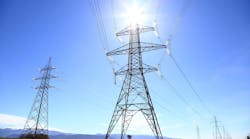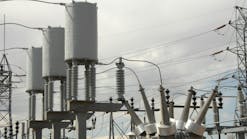DOE Proposes National Interest Electric Transmission Corridor Designation Process
The U.S. Department of Energy’s (DOE) Grid Deployment Office (GDO) has issued a Notice of Intent (NOI) and Request for Information (RFI) to inform the designation of National Interest Electric Transmission Corridors (NIETCs). NIETCs are geographic areas where electricity limitations, congestion, or capacity constraints are adversely affecting electricity consumers and communities. Designation of a NIETC unlocks critical federal investment and regulatory and permitting tools to spur urgent transmission investments needed in these geographic areas to improve reliability and resilience and reduce consumer costs. In the NOI, DOE provides further information on its anticipated approach to designating NIETCs. The RFI seeks stakeholder feedback to improve the NIETC designation process to more accurately pinpoint areas experiencing the greatest transmission need and with the greatest potential for immediate transmission deployment.
“A reliable and resilient electric transmission system is essential to the nation's economic, energy, and national security,” said Maria Robinson, director, Grid Deployment Office. “We must improve and expand national transmission capacity to meet the challenges of more frequent and intense weather, provide access to diverse sources of clean electricity, and fulfill electricity demands driven by increased electrification of homes, businesses, and vehicles. NIETCs are one of DOE’s tools to facilitate timely development of transmission infrastructure to meet these needs and we are committed to working with stakeholders, industry, and communities to create a durable solution that can unlock the most critical roadblocks.”
Under the Federal Power Act, the Secretary of Energy may designate any geographic area, such as a route, as a NIETC if they find that current or anticipated future electric energy transmission capacity constraints or congestion are adversely affecting consumers. These routes can range in length up to several hundred miles. A NIETC designation can unlock Federal financing tools, specifically public-private partnerships through the $2.5 billion Transmission Facilitation Program under the Bipartisan Infrastructure Law (BIL) and the $2 billion Transmission Facility Financing Loan Program under the Inflation Reduction Act (IRA). A NIETC designation also allows the Federal Energy Regulatory Commission (FERC) to grant permits for the siting of transmission lines within the NIETC under circumstances where state siting authorities do not have authority to site the line, have not acted on an application to site the line for over one year, or have denied an application. NIETCs are designated based in part on findings from the triennial assessment of national transmission constraints and congestion that DOE conducts pursuant to the Federal Power Act.
In The Bipartisan Infrastructure Law of 2021, Congress expanded the scope of this assessment, now called the National Transmission Needs Study (Needs Study), to include both historic and anticipated future capacity constraints and transmission congestion. This expansion allows the Needs Study to more accurately identify high-priority national transmission needs—specifically, opportunities for linking communities to new transmission facilities or upgrading existing facilities to improve reliability and resilience of the power system, reduce transmission congestion during real-time operations, alleviate power transfer capacity limits between neighboring regions, or deliver cost-effective generation to meet high-priced demand and meet projected future generation needs.
While the results of the Needs Study will highlight the greatest national transmission need, industry and stakeholder feedback is essential to informing DOE’s NIETC designation process. This feedback can identify ongoing project roadblocks such as permitting, siting, or regulatory issues. These issues can be particularly challenging to navigate when a transmission project runs through multiple states or regions requiring many layers of approvals. Increasing stakeholder engagement is one way DOE is seeking to increase NIETC geographic specificity to drive concrete and timely action, spur additional transmission development to solve transmission limitations that are adversely impacting consumers, and improve environmental reviews.
The RFI seeks feedback on final guidelines, procedures, and evaluation criteria for the designation process. Comments can be submitted via Regulations.gov and are requested 45 days after publication in the Federal Register. Questions about the Notice of Intent and Request for Information can be sent to [email protected]. A public webinar will be held on May 17, 2023, at 1 p.m. ET. Registration is required.
DOE plans to issue the results of the National Transmission Needs Study this summer and NIETC application guidance in Fall 2023.
Editor's Note: The Grid Deployment Office's Maria Robinson spoke at T&D World's Conference and Exhibition this past fall. To further the discussion, register for T&D World's event coming in September.


